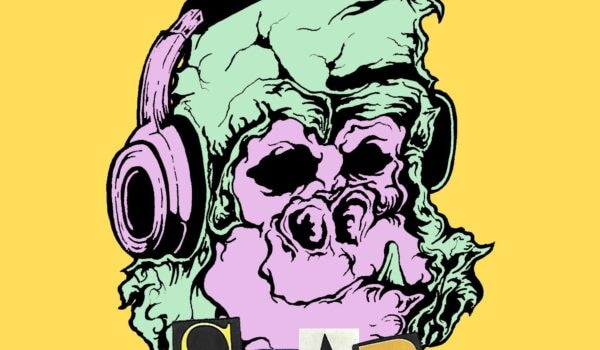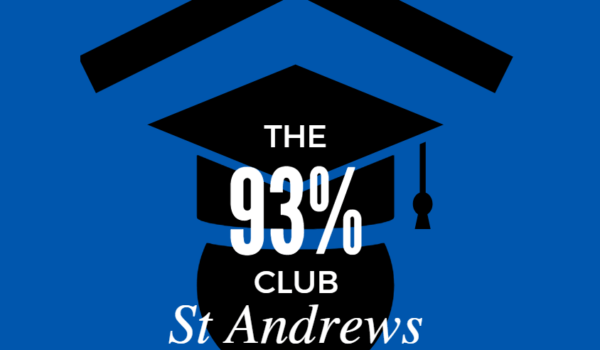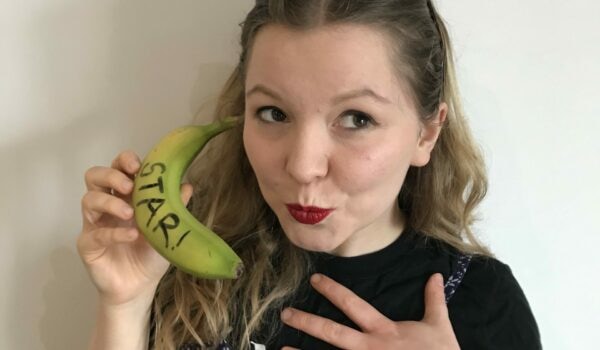Can you name a female artist?
Perhaps you know the name Georgia O’Keefe, Barbara Hepworth or Tracey Emin? Or maybe not.
How much faster does it take you to name a male artist?
Is it instantaneous?
I’m sure it’s a much more comfortable question, you could name anyone – everyone knows the famous ninja turtles Leonardo, Raphael, Donatello and Michelangelo. If not, you always have Picasso, Dali, or Van Gogh? Degas, Monet or Manet? Turner? Bacon? Edward Munch? Jackson Pollock? David Hockney?
All of these famous figures are white men, it is they who dominate the history of art.
Could you name a POC artist? Can you name an artist who is a woman of colour?
Perhaps you’re familiar with Frida Kahlo? Can you name any others? How many more?
Due to the intersectionality of race and gender, women of colour face more oppression as a woman and a POC, trapped in a system designed to see them fail compared to their white and male counterparts.
It begs the question, one that Linda Nochlin asked back in 1971 in the wake of Second Wave Feminism, ‘Why have there been no great women artists?’ As well we must ask another question, ‘Why have there been no great POC artists?’
The use of the word ‘great’ is important here, because there have been female artists, there is no doubt about that. It’s just that they weren’t ‘great’. What does that mean? Who decided that? At some point, it was somehow unanimously agreed that female artists were not worth remembering, that they could not produce anything as significant as their male counterparts. A ‘great work of art’ and the ‘genius’ who created it are gendered terms. The history of art is one largely dictated by white male narrative written to reinforce the masculinisation and whiteness of the ‘genius’ and ‘greatness’. Meanwhile, women and people of colour are excluded, left on the periphery of society.
While female artists may have been written out of history by the white men who dictate it, there are many women particularly women of colour whose art, if not for the prejudice against their gender and ethnicity, would surely have been considered ‘great’.
Though there are many more, here are 10 female artists who you should know:
1. Mary Cassatt

Mary Cassatt (1844-1926) was an American artist who spent much of her life in France where she exhibited with the Impressionists. One of her most notable works is In the Loge which addresses the issue of the male gaze. In the piece, the lady in the foreground is looking through a pair of binoculars at the theatre suggesting that she controls the subject of gaze in the work, therefore granting her a sense of agency. However, there is a man in the background looking at the woman through his own pair of binoculars demonstrating that despite her efforts for control, the woman is confined to the traditional role of women in art works as the subject of the male gaze.
2. Tarsila do Amaral

Tarsila do Amaral (1886-1973) was a key figure in the Brazilian modernist tradition, in 1923 she expressed “I want to be the painter of my country”. Abaporu, meaning “the mean that eats people” in Tupi language (a language of indigenous people), is a work that encapsulates the central aim of the artist’s work. Brazil, being colonised by Portugal and then seeing a movement of immigration in the 19th and 20th centuries, had a culture dependent on many different individual cultures. In other words, Brazilian culture digests others. Her work is crucial for counteracting the Western construct that modernism as an artistic movement is a Western phenomenon, challenging the view that ‘other’ cultures are incapable of being inspired by other cultures. This Western prejudice that stemmed from the belief that Western countries such as Britain were intellectually and artistically superior to others particularly colonised countries whose people were considered innately inferior.
3. Frida Kahlo

Frida Kahlo (1907-1954) was a Mexican painter well known for her self-portraits and affiliated with Surrealism though she later rejected this tie. Her work engages with her Mexican nationality and its origins, pre-columbian and Spanish or Mestizje. Her time in the US also led her to question the impact of gender roles on women in Western Society. The piece above demonstrates, not only the confliction between Western capitalism and Mexican spirituality, but also that the role of that wife is a societal construct rather than a self-identity, restricting women to the private sphere. Kahlo challenges the pretty in pink stereotype by juxtaposing Western beauty ideologies and demureness of women through her rigid stance and the visibility of her nipples through the material of the dress.
4. Hannah Höch

Hannah Höch (1889-1978) was a German Dada artist well known for her use of photomontage. Höch used the reconfiguration of contexts of notable images of machinery, buildings and celebrities to create new meanings in her work through juxtaposition. This juxtaposition allowed Höch to explore the gap between the promise of post-war liberation of women in the 1920s versus the still very rigidly patriarchal reality. In the photocollage above the face of the Russian ballerina Claudia Pavlova is replaced by one of an unhappy woman undermining the concept of the content New Woman in German post-war society. This representation of women dramatically deviated away from that of the male Dadaists whom Höch criticised for their hypocritical support of female suffrage when it became apparent, they still supported and reinforced sexist ideology. In particular, Haussmann physically abused her when they were in a relationship and insisted it was her responsibility to financially provide for both of them so that he was free to pursue his ‘genius’.
5. Méret Oppenheim

Méret Oppenheim (1913-1985) was a Swiss Surrealist artist and photographer, a movement where women were mainly treated as exclusively subject matter or as a muse for men. This is notable in the lack of acknowledgement Oppenheim receives as a prominent member of the Surrealist movement compared to male members such as Salvador Dali or Max Ernst. One of her most renowned works is a cup and saucer covered in fur, with the tactile juxtaposition of cool crockery and soft fur challenging our sensory perceptions. We are simultaneously compelled to reach out and stroke the fur while repelled by the prospect of drinking from the cup. Additionally, there is also a juxtaposition of connotations, bourgeois society and animalistic primality, breaking down barriers and challenging our preconceptions of what civilised society consists of. Additionally, the fur also has a sexual element alluding to a vagina, placing the taboo subject of sex and even more so female sexuality into public ‘civilised’ society.
6. Alma Thomas

Alma Thomas (1891-1978) was an abstract artist, associated with Abstract Expressionism, and was the first black female artist to have her work exhibited in her own show at the Whitney Museum of American Art in 1972. The creation of a veiling through the use of carefully placed red brushstrokes in Mars Dust suggests an exploration of that which is mostly hidden beneath a surface. It therefore potentially links to the general interest of the Abstract Expressionists in the exploration of the unconsciousness, that which is not clear but can sometimes come to the surface either without an individual’s awareness or through mechanisms such as automatism.
7. Lee Krasner

Lenore “Lee” Krasner (1908-1984) was an Abstract Expressionist known for her formal innovations working with the material and fragments of other paintings in collages. Being married to Jackson Pollock, she was and is often overlooked as an artist, with her work often being read in relation to him. In an interview she was asked if she lost her identity when she became the wife of Jackson Pollock and though she maintained “I still paint as Lee Krasner”, it is clear the critical and general perspective did not agree, with the interviewer concluding the interview by referring to her as “the widow of the late Jackson Pollock” rather than an individual artist. Even following Pollock’s unfortunate death, her work continued to be read biographically, relating her work to her grief over Pollock’s death including Gothic Landscape, a piece with no direct inference to Pollock of even grief beyond the use of harsh lines.
8. Yoko Ono

Yoko Ono (1933-present) is a Japanese multimedia artist, with her work including performance art. One such performance piece Cut Piece, she performed in 1964 at the Yamaichi Concert Hall in Kyoto, Japan, and later exhibited in New York, London and Paris. She invited the audience to cut off a section of her clothing with a pair of scissors she lay down in front of her. The piece demonstrated a paradoxical occurrence of simultaneously increasing her vulnerability while also empowering and claiming her body for her own. She challenged the racial stereotype of Asian women being demure and passive, through the use of the vehicle subjected to this social construct, her body. However, Ono’s fame, like Krasner’s, has largely been overshadowed by her marriage to her husband, John Lennon. This historical narrative only demonstrates the lack of agency granted to women over their own bodies and identities that Ono was trying to reclaim in her work.
9. Betye Saar

Betye Saar (1926-present) is an American artist whose career has frequently limited due to the racist and sexist structures acting against women of colour. She became increasingly interested in addressing racism in her works. One such work is The Liberation of Aunt Jemima where Saar repurposes a derogatory caricature by arming the figure, rendering her a fighter rather than victim whose constructed submissive position opens her up to being the subject of racially charged ridicule.
10. Yayoi Kusama

Yayoi Kusama (1929-present) is an artist born in Japan well known for her polka dot ‘obsession’, who pursed a career in art despite the lack of support she received from her family who wanted her to focus on becoming a housewife. Her work demonstrates her long-term interest in self-identity, photographing herself in many of her installations. In 1966 Kusama lay down in a black dress among some of her signature polka dot sculptures in the middle of a street. By immersing herself in her work she grants herself agency, stating her existence as creator of the piece. Additionally, in this piece she explored her relationship between her body and her surroundings, her presence in public space pushes against racial isolation against minorities including Asian women in the US. Her work is a statement of her presence, she demonstrates that she also belongs here, she is as much a member of society as anyone else.
Though most female artists lie on the periphery of history, their work is by no means less significant. The fact women artists have largely escaped the notice of mainstream culture is an indictment of the global phenomenon of systematic racism and sexism, not of their skill as artists. Their fame is by no means equivalent to their importance. Their work is not only integral in the development of art history but also for exploring the position of women both in art and culture.
References:
Linda Nochlin. ‘Why have there been no great women artists?’. Women, Art, and Power and Other Essays. (New York: Routledge, 1988).
https://collections.mfa.org/objects/31365/in-the-loge
https://www.theguardian.com/artanddesign/2018/aug/31/frida-kahlo-self-portrait-on-the-border
https://www.moma.org/calendar/exhibitions/3871
https://womennart.com/2017/08/16/abaporu-by-tarsila-do-amaral/
https://www.dailyartmagazine.com/tarsila-do-amaral-abaporu/
Maria Makela. ‘The Misogynistic Machine: Images of Technology in the Work of Hannah Höch’. Women in the metropolis: gender and modernity in Weimar Germany. (Berkeley; London: University of California Press, 1997).
https://www.moma.org/learn/moma_learning/meret-oppenheim-object-paris-1936/
https://www.artsy.net/artist/alma-thomas
https://www-degruyter-com.ezproxy.st-andrews.ac.uk/document/doi/10.12987/9780300185720-031/html
https://www.tate.org.uk/art/artworks/krasner-gothic-landscape-t03291
https://www.moma.org/learn/moma_learning/yoko-ono-cut-piece-1964/
https://www.moma.org/artists/5102
https://www.tate.org.uk/art/artists/yayoi-kusama-8094/introduction-yayoi-kusama
https://elephant.art/iotd/yayoi-kusama-14th-street-happening-1966-03032020/








Comments